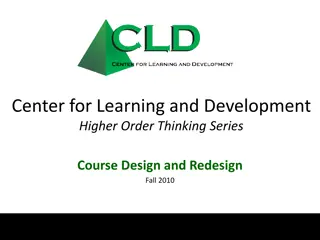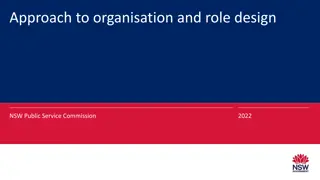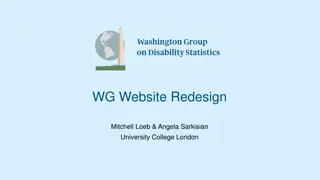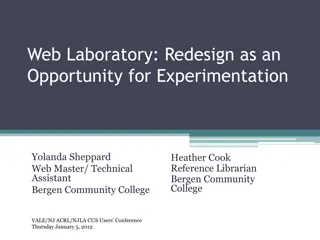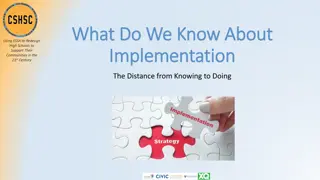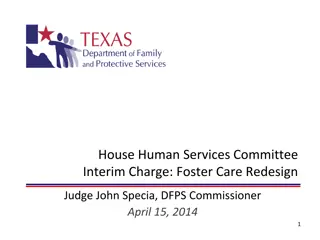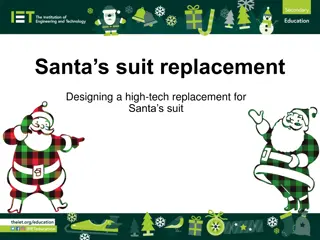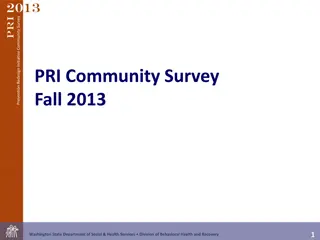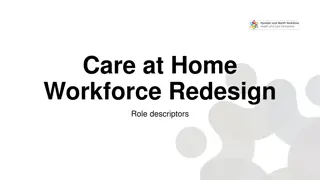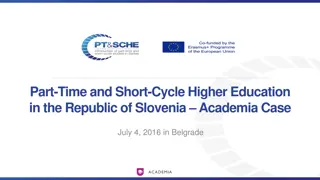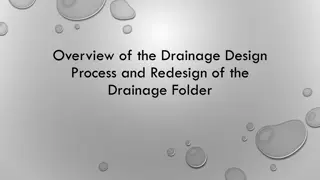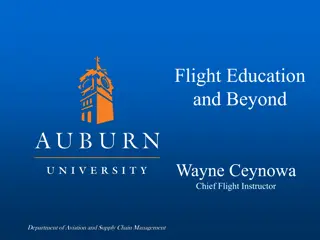Higher Education Business Process Redesign Workshop Agenda
This document provides information about a Business Process Redesign workshop tailored for Higher Education institutions. It covers the agenda, contact information, introduction to BPR, background information, planned deliverables of the session, and insights into BPR methodology. The workshop aims to enhance processes, improve productivity, and reduce costs in the higher education sector.
Download Presentation

Please find below an Image/Link to download the presentation.
The content on the website is provided AS IS for your information and personal use only. It may not be sold, licensed, or shared on other websites without obtaining consent from the author.If you encounter any issues during the download, it is possible that the publisher has removed the file from their server.
You are allowed to download the files provided on this website for personal or commercial use, subject to the condition that they are used lawfully. All files are the property of their respective owners.
The content on the website is provided AS IS for your information and personal use only. It may not be sold, licensed, or shared on other websites without obtaining consent from the author.
E N D
Presentation Transcript
Business Process Redesign Business Process Redesign For For Higher Education Higher Education
Contact Information Don Hartz Office: 989-687-7873 Cell: 989-859-8161 Email: dehartz@chartermi.net 2
AGENDA 1) INTRODUCTION 8) BPR EXERCISE 2) BPR BACKGROUND 9) EXERCISE REPORT OUT 3) BPR IN HIGHER-ED 10) EXERCISE WRAP-UP 4) BPR BASIC PRINCIPLES 11) WHEN BPR FAILS 5) BPR SIMPLIFIED METHODOLOGY 6) WHY BPR METRICS ??? 7) CONTINUOUS IMPROVEMENT 3
BPR INTRODUCTION Who s Here ??? What Departments Are Represented ??? What Roles Are Represented ??? Setting Expectations Why Are You Here ??? What Are Your Key Expectations ??? What Are You Seeing As Processes At Your Campus That Can Benefit from Process Improvement ??? 4
INTRODUCTION (continued) PLANNED DELIVERABLES OF THIS SESSION An Understanding of the Purpose and Use of BPR An Understanding of BPR Roles and Responsibilities Provide Insight Into the BPR Methodology Basic Understanding of How To Start a BPR initiative Hands-On Exposure to a Facilitated BPR Session 5
BPR BACKGROUND What is a Process ? Any set of structured actions performed to create a desired outcome can be called a process . As such, processes have been in existence since the beginning or time. Since the design of the 1st process, efforts have been made to improve upon the design in hopes of improving performance. 6
BPR BACKGROUND (continued) What is BPR ? Business Process Redesign is a facilitated methodology that identifies both the strengths and weaknesses of existing business processes and identifies changes that can improve productivity, quality, customer service and reduce costs. The Redesign process must be followed by a formal Project that has been sponsored and prioritized by executive management in-order to implement changes that have been identified. 7
BPR BACKGROUND (continued) BPR in Business Many businesses have been more formally involved in process improvement over the past 30 years. Utilizing process design methodologies developed by major consulting firms. Corporate process improvement could readily be found in the 80 s but really became popular in the 90 s with the introduction of Business Process Reengineering (BPR) by people like Michael Hammer and James Champey. With the continued pressure to improve profits, the need to improve business processes still exists today in hopes of lowering operating costs, improving costs, improving quality and increasing revenue. 8
BPR BACKGROUND (continued) Recommended Reading Reengineering the Corporation Michael Hammer and James Champy Beyond Reengineering Michael Hammer The Reengineering Revolution Michael Hammer Lean Thinking James Womack Managing at the Speed of Change Daryl Conner Leading Change John Kotter Navigating through Change Harry Woodward 9
BASIC PROCESS DESIGN PRINCIPLES Organize around process outcomes --- not tasks Build in flexibility for future needs (don t build out flexibility) Build new and enhance existing strategic partnerships with process stakeholders Capture information once Use automation and technology when possible Establish a continuous improvement mindset and capability 10
BUSINESS PROCESS REDESIGN BUSINESS PROCESS REDESIGN From Independent Silo s --with many hand-offs Tasks Department A Department B To Team Supported Workflows PROCESS 11
BPR IN HIGHER-ED WHY ??? Continued Rising Cost of Operations Need to do More with Less Desire to be Proactive vs. Reactive 12
BPR IN HIGHER-ED (continued) Where ??? Procurement Student Services Student Billing Conference & Events Student Employment Classroom Scheduling Facilities Management Campus Space Planning Integrated Marketing Student Registration Student Teaching Student Transfers Student Account Receivable Class Scheduling Minimum Wage Impact PC Replacement Planning 13
BPR IN HIGHER-ED (continued) Benefits ??? Improved Process Performance Process Quality Improvement Cost Reduction Increased/New Revenue Significantly Improved Workflow Understanding Participant Ownership of BPR Results 14
BPR SIMPLIFIED METHODOLOGY THE BPR METHODOLOGY IS SIMPLE TO FOLLOW AND DEALS WITH BASIC Q&A THAT PARTICIPANTS FAMILIAR WITH THE EXISTING WORKFLOW WILL FIND COMFORTABLE TO WORK WITH. 1) Situation Statement 2) Discovery of Symptoms, Problems and Causes 3) Develop the AS-IS Model 4) Identification of AS-IS Strengths and Weaknesses 5) Develop the TO-Be Model 6) Identify GAPS between the AS-IS and TO-BE 7) Develop Recommended Actions 8) Identify Key Roles and Responsibilities 15
ROLE OF THE FACILITATOR The Facilitator does not need to be a subject matter expert The Facilitator does need to understand the BPR Methodology The Facilitator needs to lead the team thru the Methodology but but does not direct them into one solution vs. another The Facilitator needs to understand Group Dynamics and be able to draw non-contributors into the process The Facilitator must be flexible, based upon the pace of the team The Facilitator should ask probing questions and take the team diving into details when a more-in-depth understanding is needed 16
ROLE OF THE PARTICIPANTS The Participant needs to come to the BPR session ready to document the current workflow process (AS-IS) The Participant should be able to identify known issues with the current process as well as it s strengths The Participant needs to come prepared to be open to learning more about the process than they knew coming in The Participant needs to come prepared to think out of the box in the design of the future process (TO-BE) 17
ROLE OF THE INSTITUTION The Institution needs to identify a business process that is critical to the work of the campus but is recognized for having less than desired operational performance The Institution (Executive Management) needs to be seen and heard as key sponsors The Institution needs to be prepared to support the BPR sessions by making identified key participants available as required The Institution needs to be prepared to support the recommendations of the BPR Design Team by prioritizing and supporting the initiative as a legitimate Change project 18
BPR OUTPUT Documented BPR Session Results Record SYMPTOMS, PROBLEMS and CAUSES Model of Current AS-IS Process Identified STRENGTHS and WEAKNESSES Model of the Envisioned TO-BE Process Team Identification of GAPS and RECOMMENDATIONS on Changes to be made Identified Key Roles and Responsibilities to Ensure a Successful Project 19
BPR EXERCISE Choose A Common and Relatively Simple Workflow of which most participants will have some understanding Perform a BPR with Multiple Team Members taking a Shared Role as the Facilitator. Assign a Process Recorder to Assist the Facilitator. Do the Following Steps: 1) Situation Summary Statement 2) AS-IS Model 3) Strengths & Weakness 4) TO-BE Model 20
BPR REPORT-OUT From Your BPR Process Notes, Report on Your Findings at each Process Step. 1) Situation Summary Statement 2) AS-IS Model 3) Strengths & Weakness 4) TO-BE Model 21
EXERCISE WRAP-UP Key BPR Steps Not Taken in the Exercise 1) Choosing the Right Workflow 2) Seeking Executive Sponsorship 3) Choosing the BPR Team ------------------------------------------------- 4) Identify Symptoms, Problems and Causes 5) Identify GAPS between AS-IS and TO-BE 6) Develop Recommended Actions 7) Identify Key Roles and Responsibilities 8) Forming The Change Process Tools and Techniques For Consideration 1) Multiple Easels and Pads (use self adhesive) 2) Consider use of an assistant to record information from Pads on a timely basis. Can save many hours following the BPR 22
CONTINUOUS IMPROVEMENT Often over looked due to the hectic pace of change design and implementation, organizations do not place adequate focus and time on monitoring and continuously improving new workflows. Known more commonly as Process Management, continuous improvement establishes a set of key metrics around productivity, quality and customer service and then ensures those metrics are actually implemented and analyzed on a routine basis. Creating a culture of continuous improvement not only ensures ongoing Effective use of the new processes but can typically identify other processes that may be out of control. First Steps to Continuous Improvement: 1) Determine Process Owners / Identify Roles & Responsibilities 2) Name Continuous Improvement Team/ Develop Mission /Identify Roles & Responsibilities 3) Determine Key Metrics 23
When BPR Fails When executive management fails to support team recommendations and direction When middle management fails to lead change When the methodology stops at the end of the Gap Analysis / Recommendations When the Concept of Continuous Improvement is not implemented When principles of Change Management are not applied 24




